SUMMARY
This is AI generated summarization, which may have errors. For context, always refer to the full article.
![[OPINION] Raised on radio](https://www.rappler.com/tachyon/2024/04/raised-on-radio.jpg)
My generation grew up on radio.
But my family didn’t have the fancy, shiny branded one with glowing dials. We had a transistor radio, or several transistor radios over a period of years.
I’m talking about those cheap battery-operated devices encased in lawanit boxes. In the 70s you could buy radio kits at a hardware store and assemble them at home or in shop class. All you needed was a soldering iron, a steady hand, and a basic understanding of schematic diagrams and you are ready to rock or swing.
It was AM radio non-stop (There were no FM stations until the mid-70s). Mornings with Johnny de Leon and his sidekick Ngongo on “Lundagin Mo, Baby” while getting ready for school. And nanay’s music programs and soap operas in the afternoon. I would listen along while doing homework or helping out with the household chores.
Nanay introduced me to Doris Day, Connie Francis, Andrew Sisters, Nat King Cole, and her favorite, Elvis Presley. I still carry a fondness for the songs of my mother’s generation, and I know most of these songs by heart. She would later develop a fondness for ’70s OPM.
The transistor radio was nanay’s constant companion while doing laundry or cooking or while working on her sewing machine. She was a part-time modista, sewing school uniforms and gowns for debutantes and Santacruzan sagalas. School openings and summer were peak seasons.
Before I was touched by the spirit of rock music, I used to listen to DWIZ when it was still an all-music station. Their tagline was DWIZ Sunshine City. It was my introduction to popular music, the likes of Bobby Vinton, Conway Twitty, Neil Sedaka, Donny & Marie, Barry Manilow. There were also vocal groups like Blue Magic, the Miracles, the Main Ingredient.
Radio introduced me to the Manila Sound, the songs of Hotdog and Cinderella, sleek pop songs with Tagalog lyrics about crushes and tigyawat sa ilong (pimple on the nose) – the usual adolescent concerns. My classmates had their favorite stations, DZBM and WBL.
By third year high school, I was still pimply but I was a full-fledged rocker.
FM radio provided an oasis from AM pop. There were only two FM stations by 1977, or two stations I cared to listen to. One was KW, a jazz station, and DWRT. Both were commercial-free stations. And RT offered a bonus: Casey Kasem’s American Top 40, a weekly syndicated show featuring the hottest songs on the US music charts. It’s where you get to listen to new songs before they’re picked up by local AM stations. I heard the songs of Boston, Foreigner, Boz Scaggs, Peter Frampton, and Fleetwood Mac on this show. Of course, I also had to sit through Debbie Gibson, Anne Murray, and Dan Hill.
I was part of the Pinoy Rock congregation, collectively called jeproks after Mike Hanopol’s solo hit song. On Sundays, RJ-AM was our church and Howling Dave was our preacher.
I could walk down our street during the show without missing a single minute of Maria Cafra’s “Tala sa Umaga” or Juan de Cruz’s “Langit.” And Banaag Street is a rather long street, covering three of four “purok” in our barrio, later renamed barangay, of Pineda in Pasig. Every house with a long-haired teenager had their radio tuned in to RJ-AM and they were turned up loud.
Songs from the Pinoy Rock era captured and reflected the ambiguity and the undercurrent of social unrest during the Martial Law regime. They also flouted the construct of a disciplined and wholesome society with their overt paeans to drugs, best exemplified by Juan de la Cruz’s “Nadapa sa Harina.”
Another common theme was the musician’s lament. Listen to Hanopol’s “Buhay Musikero,” Maria Cafra’s “Buhay Gapo” and even “Bandang Pinoy” from the pop group Hotdog. While Florante’s “Laya” or “Ako” romanticized the hard life of a working musician, lines like “Ay, ay kay hirap ng buhay (Oh, life is so hard)” from Hanopol provided a gritty, more realistic narrative.
Then there were songs commenting on social and political realities, topics that evaded the radar of Martial Law’s adjudicators of culture.
On the self-titled “Banyuhay ni Heber,” the group Banyuhay, fronted by singer-songwriter and part-time astrologer Heber Bartolome sang coherent, well-crafted, and pointed topical commentaries like “Buhay Pinoy,” “Pasahero,” and “Oy, Utol Buto’t Balat ka Na, Natutulog Ka Pa.” The last stands out for its strident and unapologetic indictment of apathy in the midst of misery and repression.
Radio was my gateway to music and soft culture, the subtle creep of youthful rebellion beyond the reach of government’s Martial Law propaganda machinery.
Joey Salgado is a former journalist, and a government and political communications practitioner. He served as spokesperson for former vice president Jejomar Binay.
This was first published in Our Brew.
Add a comment
How does this make you feel?

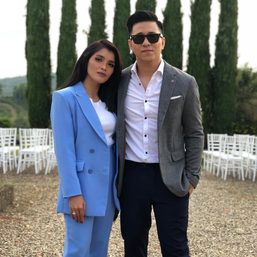

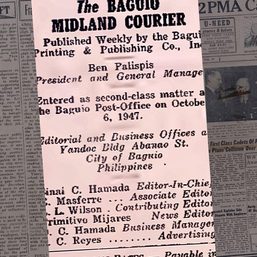
![[Just Saying] Marcos: A flat response, a missed opportunity](https://www.rappler.com/tachyon/2024/04/tl-marcos-flat-response-april-16-2024.jpg?resize=257%2C257&crop=277px%2C0px%2C720px%2C720px)
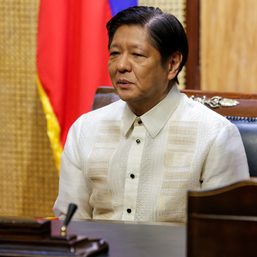


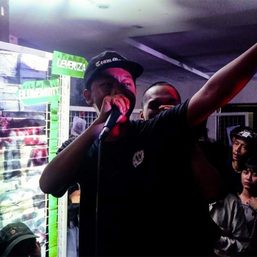




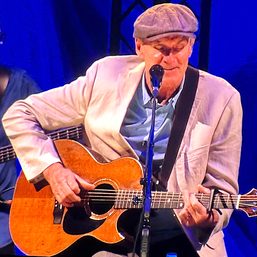

![[Uncle Bob] Crazy about vinyl? Here are some helpful tips](https://www.rappler.com/tachyon/2024/02/vinyl-3image7.jpeg?resize=257%2C257&crop_strategy=attention)





There are no comments yet. Add your comment to start the conversation.